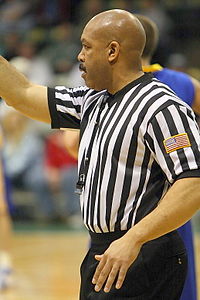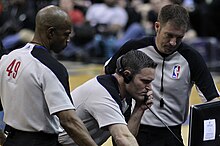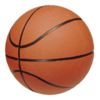
A referee is an official, in a variety of sports and competition, responsible for enforcing the rules of the sport, including sportsmanship decisions such as ejection. The official tasked with this job may be known by a variety of other titles depending on the sport, including umpire, judge, arbiter (chess), commissaire, or technical official. Referees may be assisted by umpires, linesmen, timekeepers, touch judges, or video assistant referees.

In baseball, the umpire is the person charged with officiating the game, including beginning and ending the game, enforcing the rules of the game and the grounds, making judgment calls on plays, and handling disciplinary actions. The term is often shortened to the colloquial form ump. They are also sometimes nicknamed blue due to the traditional color of the uniform worn by umpires. Although games were often officiated by a sole umpire in the formative years of the sport, since the turn of the 20th century, officiating has been commonly divided among several umpires, who form the umpiring crew. The position is analogous to that of a referee in many other sports.

In association football, the referee is the person responsible for interpreting and enforcing the Laws of the Game during a match. The referee is the final decision-making authority on all facts connected with play, and is the match official with the authority to start and stop play and impose disciplinary action against players and coaches during a match.
Dead ball is a term in many ball sports in which the ball is deemed temporarily not playable, and no movement may be made with it. Depending on the sport, this event may be quite routine, or more uncommon.
An umpire in field hockey is a person with the authority to make decisions on a hockey pitch in accordance with the rules of the game. Each match is controlled by two such umpires. In theory they are responsible for decisions taken on their respective half of the field, but practically they "control' on either diagonal half of the field. In many higher-level events, a "reserve umpire" is appointed in addition to the two "field umpires" to act as a back-up in the event of injury or other issue preventing a field umpire from commencing or continuing a match. In World-Level competitions, a video umpire is also appointed in addition to the field and reserve umpires.
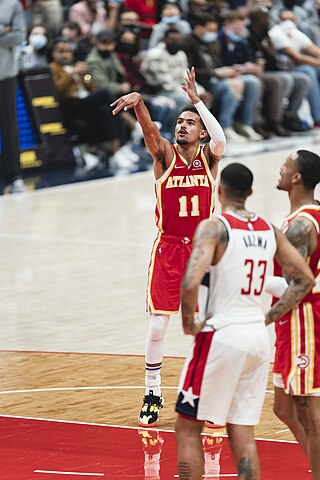
In basketball, free throws or foul shots are unopposed attempts to score points by shooting from behind the free-throw line, a line situated at the end of the restricted area. Free throws are generally awarded after a foul on the shooter by the opposing team, analogous to penalty shots in other team sports. Free throws are also awarded in other situations, including technical fouls, and when the fouling team has entered the bonus/penalty situation. Also, depending on the situation, a player may be awarded between one and three free throws. Each successful free throw is worth one point.
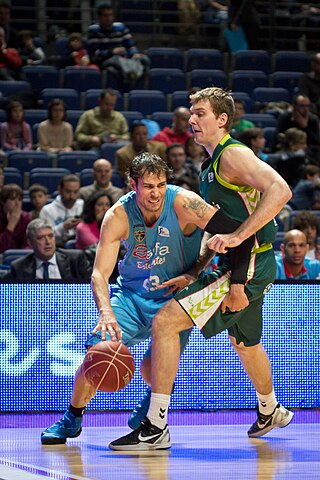
In basketball, a personal foul is a breach of the rules that concerns illegal personal contact with an opponent. It is the most common type of foul in basketball. A player fouls out on reaching a limit on personal fouls for the game and is disqualified from participation in the remainder of the game.

In ice hockey, an official is a person who has some responsibility for enforcing the rules and maintaining the order of the game. There are two categories of officials, on-ice officials, who are the referees and linesmen that enforce the rules during gameplay, and off-ice officials, who have an administrative role rather than an enforcement role.

In gridiron football, an official is a person who has responsibility in enforcing the rules and maintaining the order of the game.

The rules of basketball are the rules and regulations that govern the play, officiating, equipment and procedures of basketball. While many of the basic rules are uniform throughout the world, variations do exist. Most leagues or governing bodies in North America, the most important of which are the National Basketball Association and NCAA, formulate their own rules. In addition, the Technical Commission of the International Basketball Federation (FIBA) determines rules for international play; most leagues outside North America use the complete FIBA ruleset.

In sports, an ejection is the removal of a participant from a contest due to a violation of the sport's rules. The exact violations that lead to an ejection vary depending upon the sport, but common causes for ejection include unsportsmanlike conduct, violent acts against another participant that are beyond the sport's generally accepted standards for such acts, abuse against officials, violations of the sport's rules that the contest official deems to be egregious, or the use of an illegal substance to better a player's game. Most sports have provisions that allow players to be ejected, and many allow for the ejection of coaches, managers, or other non-playing personnel. In sports that use penalty cards, a red card is often used to signal dismissals. In some sports, another player is permitted to enter the game in place of the player who has been ejected, but in others the team is required to continue the game with a reduced number of players.

Earl "Yogi" Strom was an American professional basketball referee for 29 years in the National Basketball Association (NBA) and for three years in the American Basketball Association (ABA). Strom is credited as one of the great referees in the history of the NBA and was known for his flamboyant style and ability to control the game. Nicknamed "The Pied Piper", the assertive Strom made foul calls with his whistle by using a "tweet-pause-tweet-tweet" tune and pointing at the offending player. In addition to calling fouls with flair, he was known for ejecting players from games with style and he sometimes supported his rulings with physical force.
Norm Drucker was a major influence in professional basketball officiating for over 35 years. His NBA and ABA officiating career as both a referee and Supervisor of Officials spanned the careers of all-time pro basketball greats, from George Mikan, Bob Cousy, Dolph Schayes and Bob Pettit in the 1950s, to Wilt Chamberlain, Jerry West, Elgin Baylor and Bill Russell in the 1960s, to Julius Erving, Rick Barry, Bill Bradley and Walt Frazier in the 1970s and to Larry Bird and Magic Johnson in the 1980s.

Steve Javie is an American retired professional basketball referee who refereed in the National Basketball Association (NBA) from the 1986–87 NBA season to the 2010–11 season and is currently an analyst with ESPN and a Catholic permanent deacon. Javie officiated 1,514 regular season, 243 playoff, and 23 NBA Finals games and is one of few NBA referees to officiate 1,000 games. According to Referee magazine, Javie was a highly regarded referee in the NBA, and he was respected within the officiating community for his game management skills. He was also notable during his NBA officiating career for his quickness in assessing technical fouls.
James Michael "Jake" O'Donnell is a former sports official who worked as a National Basketball Association (NBA) referee for 28 seasons from 1967 to 1995, and also as an umpire in Major League Baseball for four seasons from 1968 to 1971. He is the only person to officiate All-Star games in both Major League Baseball and the NBA.
The 1981 NBA playoffs were the postseason tournament of the National Basketball Association's 1980–81 season. The tournament concluded with the Eastern Conference champion Boston Celtics defeating the Western Conference champion Houston Rockets 4 games to 2 in the NBA Finals. Cedric Maxwell was named NBA Finals MVP.

In tennis, an official is a person who ensures that a match or tournament is conducted according to the International Tennis Federation Rules of Tennis and other competition regulations.
An official in Canadian football is a person who has responsibility in enforcing the rules and maintaining the order of the game, like their counterparts in the American game. In the Canadian Football League, seven officials operate on the field. Lower levels of play up to the university level use less than the standard seven.
Basketball is a ball game and team sport in which two teams of five players try to score points by throwing or "shooting" a ball through the top of a basketball hoop while following a set of rules. Since being developed by James Naismith as a non-contact game that almost anyone can play, basketball has undergone many different rule variations, eventually evolving into the NBA-style game known today. Basketball is one of the most popular and widely viewed sports in the world.

